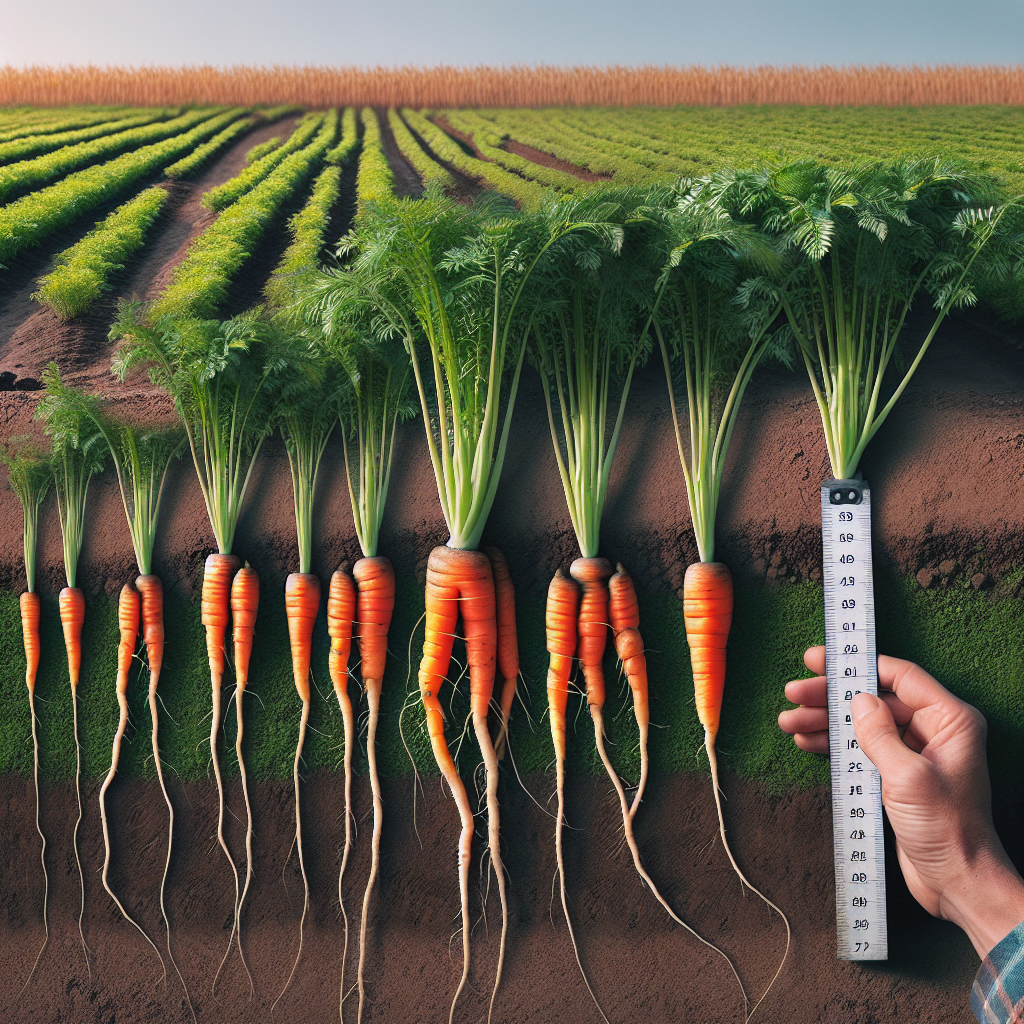
How long do carrots grow
Understanding Carrot Growth: A Comprehensive Guide
Carrots are one of the most beloved root vegetables around the world. Known for their vibrant orange color and their crunchy sweetness, they are a staple in various cuisines. However, to enjoy the freshest and most flavorful carrots, understanding their growth cycle is crucial. In this article, we will explore the growth duration of carrots, factors that influence their growth, and tips for successful cultivation.
The Growth Cycle of Carrots
Carrots undergo a series of developmental stages from seed to harvest. This growth cycle plays an essential role in determining when you can expect to harvest your crop. Typically, carrots take about **70 to 80 days** from planting to reach maturity. However, this time can vary based on several influential factors.
Factors Influencing Carrot Growth Duration
The time it takes for carrots to grow can be affected by a variety of factors. Here are some key aspects that can influence their growth rate:
- Variety: Different carrot varieties have varying maturation times. For instance, the 'Nantes' variety matures faster than 'Imperator'.
- Soil Conditions: Loose, well-drained soil is beneficial for carrot growth, as it allows the roots to expand without obstruction.
- Watering: Consistent moisture is crucial. Carrots require watering regularly to ensure optimal growth.
- Climate: Carrots thrive in cooler temperatures. Optimal temperature ranges between 60°F to 70°F promote rapid growth.
Planting Carrots: A Step-by-Step Guide
To reap the benefits of homegrown carrots, you need to follow some simple steps for effective planting:
- Choose the Right Variety: Depending on your local climate and soil type, research the best carrot varieties for your area.
- Prepare the Soil: Till the soil to at least 12 inches deep and amend it with organic matter to improve drainage.
- Sow the Seeds: Plant carrot seeds about 1/4 inch deep and 2 inches apart in rows that are 12 to 18 inches apart.
- Watering: Water lightly after planting and keep the soil moist until the seeds germinate. This usually takes about 10 to 14 days.
- Thinning: Once seedlings are 2 inches tall, thin them to 2 to 4 inches apart to give them space to grow.
Ideal Growing Conditions
Providing the right environment is vital for the optimal growth of carrots. Here are the ideal growing conditions:
- Soil pH: Carrots grow best in slightly acidic to neutral soil, with a pH range of 6.0 to 7.0.
- Sunlight: Full sun is essential for carrots, requiring at least 6 hours of sunlight per day.
- Fertilizer: Use a low-nitrogen fertilizer, as high nitrogen can lead to excessive foliage growth at the expense of root development.
Common Pests and Diseases
Like any crop, carrots are susceptible to pests and diseases that can hinder their growth. Familiarize yourself with the common problems:
- Carrot Rust Fly: These pests can damage roots, leading to poor quality. Preventative measures include using row covers.
- Leaf Blight: A fungal disease that causes dark spots on leaves. Treatment can involve crop rotation and fungicides.
- Root Knot Nematodes: These microscopic pests deform roots. Crop rotation and nematode-resistant varieties can help manage this.
Harvesting Carrots
Knowing when to harvest is just as important as knowing how long do carrots grow. Harvest your carrots when they reach the desired size, which varies by variety, typically between one inch and two inches in diameter. Use a garden fork or spade to gently loosen the soil around the roots before pulling them out.
“Timing is everything when harvesting carrots. Pull them too early, and they may not have the sweetness you desire; wait too long, and they risk becoming woody.”
Storing Your Harvest
Proper storage ensures your fresh carrots maintain their crispness and sweetness. Consider these storage methods:
- Refrigeration: Store carrots in the refrigerator in a plastic bag with some holes or in a container with damp sand.
- Freezing: Blanch carrots before freezing to preserve quality and flavor.
- Root Cellaring: If you have a cool, dark place, store carrots in sand or sawdust to prolong freshness.
Conclusion: Enjoying the Fruits of Your Labor
Growing carrots can be a rewarding experience, whether you are a novice gardener or an experienced pro. Understanding the growth cycle, from how long do carrots grow to their specific needs and the challenges one might face, empowers you to cultivate a bountiful harvest. So grab your gardening tools, prepare your soil, and soon you will be on your way to enjoying crisp, tasty carrots right from your garden!
By Guest, Published on August 10th, 2024